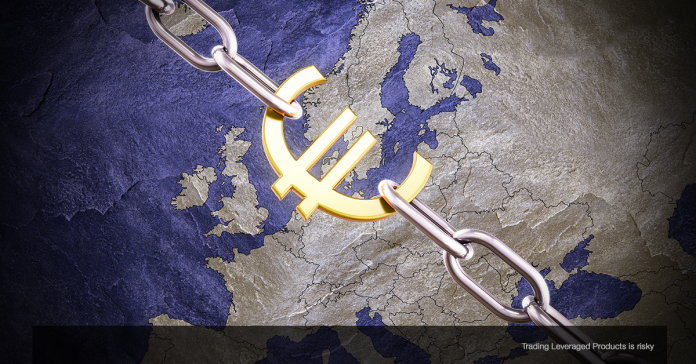Euphoria over vaccine developments has eased somewhat and Brexit talks remain at a knife edge.
Still, data releases showing that the manufacturing sector at least is holding up through the current lockdowns and the prospect of a strong rebound in activity through spring and summer next year will leave the hawkish camp at the ECB trying to rein in excessive demands at Thursday’s ECB meeting.
That Lagarde will deliver a strengthening of PEPP and TLTRO programs is almost certain and a move to a more symmetric inflation target also wouldn’t surprise anybody, but those hoping for another easing bonanza are likely to be disappointed. Looking ahead, political pressure on the central bank is likely to increase once the focus turns from damage control to managing the recovery.
The prospect of another hit to the economy in Q4 still leaves the ECB and fiscal authorities in crisis mode, but positive news on the vaccine front leaves investors looking ahead to the recovery. Once the focus shifts it will also become increasingly apparent that the rise in sovereign debt and private debt through the crisis will leave not just banks vulnerable to a likely rise in non-performing loans. It also leaves the risk of another debt crisis on the table if and when the ECB tries to rein in stimulus.
The first wave of the pandemic saw central banks and governments going into crisis mode, with preferential and subsidised loans implemented to help keep companies afloat through the crisis. Measures like the subsidised wage scheme helped employers retain skilled staff through lockdowns, which in turn allowed a quick restart of activity once economies re-opened. This has been particularly effective for the manufacturing sector, especially as major export partners continue to expand, and demand picked up pretty quickly again. It also helped to keep consumption underpinned, and it put a lid on unemployment.
Looking past the crisis however, it is clear that governments and companies will have to pay back debt accumulated during the crisis. The ECB’s Financial Stability Report highlighted that not only does the strength in asset prices and renewed risk taking leave some markets increasingly susceptible to corrections, but it also highlighted “rising fragilities among firms, households and sovereigns amid higher debt burdens”.
Some banks are already struggling with the “hangover” of non-performing loans (NPL) accumulated during the financial crisis. Not only has the reduction of NPL levels come to an end, but banks are also likely to face a rise in non-performing loans as not all companies that have been kept alive with the help of crisis loans will survive the pandemic. Also, not all households will be able to cope with the accumulated debt burden amid the rise in jobless numbers. The banking system as a whole had already started to increase provisions at the start of the pandemic, but developments are uneven across countries and at the same time the nightmare of the Eurozone sovereign debt crisis is raising its head again.
So far this hasn’t been a problem, thanks to the ECB’s asset purchase program, which is keeping demand for sovereign debt underpinned and spreads narrow, despite the sharp differences in debt burdens. The EU’s proposed recovery fund, which transfers some of the financing responsibility for the necessary recovery programs to EU level and thus allows debt sharing to a limited extent, also helped markets to look past vulnerabilities at the country level — these vulnerabilities are likely to increase going forward.
As long as that remains the case and spreads remain low, there is unlikely to be a problem. However, developments highlight risks going forward once the focus of markets and investors moves away from immediate crisis measures and central banks attempt to rein in stimulus measures. Joint financing of the proposed recovery fund may have been an important step, but it does not constitute a move towards general debt sharing or the finalisation of a banking union.
For now, the ECB’s PEPP program, which also removes the need to distribute purchases according to the ECB’s capital key, is helping to gloss over the issue. Yet the books have to be balanced at the end of the program, which currently is set for June of next year. However, even if vaccine developments offer a glimmer of hope for a recovery next year and ECB officials seem to be trying to dampen speculation of additional stimulus, the above highlights that in Italy in particular, the risk of a negative feedback loop between sovereign and bank debt is still high and rising. So rebalancing the books won’t be easy, and if nothing else the ECB will push out the end date of the program. Indeed, unless there is a move to joint financing and debt sharing in the Eurozone, which currently seems unlikely, the temptation to push out the end of PEPP indefinitely will be high.
Click here to access the Economic Calendar
Andria Pichidi
Market Analyst
Disclaimer: This material is provided as a general marketing communication for information purposes only and does not constitute an independent investment research. Nothing in this communication contains, or should be considered as containing, an investment advice or an investment recommendation or a solicitation for the purpose of buying or selling of any financial instrument. All information provided is gathered from reputable sources and any information containing an indication of past performance is not a guarantee or reliable indicator of future performance. Users acknowledge that any investment in Leveraged Products is characterized by a certain degree of uncertainty and that any investment of this nature involves a high level of risk for which the users are solely responsible and liable. We assume no liability for any loss arising from any investment made based on the information provided in this communication. This communication must not be reproduced or further distributed without our prior written permission.






















